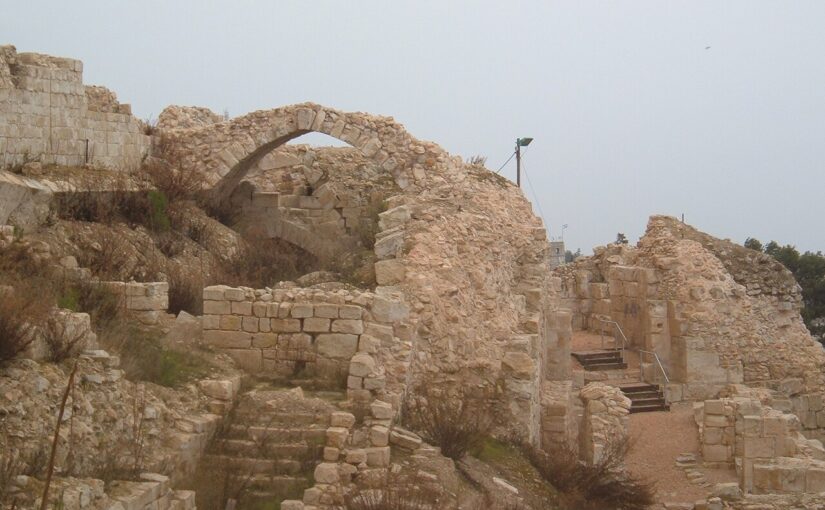High in the green hills of Israel’s northern Galilee sits the city of Safed, a place where sunlight and mysticism linger in the mountain air. The Citadel, perched atop the summit, stands as the crown of Israel’s highest city. From this vantage, endless views sweep over the soft blue waters of the Sea of Galilee and the distant peaks of Mount Meron. Olive groves line the winding roads, their silver leaves flickering in the breeze, while stone houses tumble down ancient lanes. The Citadel sits quietly at the center of it all. A silent guardian watching over a city where history, spirituality, and artistry are deeply intertwined.
Ancient Foundations and Crusader Ambitions
The story of the Citadel of Safed stretches back thousands of years. Ancient Canaanite and Jewish kingdoms recognized the importance of the high mountaintop. The Romans valued it too, laying foundations that would later support centuries of struggle and change. Yet, Safed’s greatest transformation came in the age of the Crusaders. In the twelfth century, the Crusaders recognized that whoever held Safed’s summit controlled the Galilee and the major land routes rising out of the Jordan valley. They built a mighty fortress, thick walls and towers crowning the city and visible for miles. By 1168, the Crusader fortress was among the most formidable in the Holy Land, rising to its full glory under the Templar order in the mid-thirteenth century.
The rebuilding of Safed under the crusaders showcased advanced defensive techniques: double-walled ramparts, solid stone towers, and a deep trench that cut the fortress off from the surrounding land. The bishop of Marseille, Benoît d’Alignan, left behind descriptions of a stronghold that could accommodate thousands of defenders. Its gates, towers, and vaulted courtyards gave it strength, but also allowed for a flourish of daily life: markets, wells, and workshops thrived within its boundaries.
Siege, Conquest, and Mamluk Majesty
But Safed’s time as a Crusader crown jewel was brief. In 1266, the powerful Mamluk sultan Baybars launched a campaign to evict the Crusaders from the region. After a determined six-week siege, the fortress fell, its defenders executed. Baybars spared the Citadel itself, recognizing its unrivaled strategic advantage. He dramatically reinforced it, adding towering new keeps and expanding the fortress to serve as the Mamluk capital for the entire Galilee. More than just a military headquarters, the Citadel became the heart of regional administration, protected trade, housed markets and baths, and became a beacon of Muslim power in the north.
For centuries after, waves of rulers came and went. The Ottomans found the fortress battered but still imposing. Earthquakes shook Safed, most devastatingly in 1837, leaving only stretches of ancient wall, archways, and broken towers as a reminder of its medieval might. Today, among the stones and ruins, visitors can still sense the shadow of armies and the hum of everyday life from centuries past.
Layers of Spiritual and Artistic Significance
The fortress influenced more than military strategy. After the Crusader era faded, Safed emerged as a center of Jewish mysticism, scholarship, and poetry during the flourishing of Kabbalah in the sixteenth century. This new life was shaped by those who came seeking refuge, study, and spiritual peace in the city’s winding streets. The Citadel watched as synagogues and academies opened below its hill, their wisdom carried out to the world.
Today, the Citadel remains at the city’s heart, connecting the spirit of the past with vibrant galleries and studios of the modern Artists’ Quarter. On its slopes, musicians, painters, and poets have found inspiration. The surrounding park is sprinkled with wildflowers in spring, inviting families and solo travelers alike to picnic, wander, and dream among the echoes of the past.
A Journey for Every Traveler
Visiting the Citadel of Safed is not just about stones and stories; it is a moment of connection to the land itself. The panoramic view from the top draws travelers at sunrise and sunset. It is easy to see why generations of defenders and dreamers were drawn here. The site is accessible year-round, though a visit on a clear day rewards with unforgettable clarity, and a camera is almost mandatory to capture the vistas.
The ruins are evocative, allowing adventurous souls to explore what remains of thick ramparts and ancient watchtowers. A solitary monument honors the struggles of the 1948 War of Independence, weaving yet another chapter of resilience into the site’s memory. Below, the city buzzes with creative life, blending centuries-old synagogues with the innovative cafes and studios of contemporary artists. Every walk from the Citadel to the Old City center is a step through layers of history that have shaped not only Safed, but the entire region.
Why the Citadel Still Matters
At day’s end, what lingers is the Citadel’s silence and view. Here, at the crossroads of armies and pilgrims, mystics and travelers, history is not just preserved; it is felt. The Citadel of Safed stands as much more than a ruin. Its legacy lives in the strategic vision of ancient builders, the courage of defenders, the prayers and poetry of saints, and the creative fire of today’s artists.
For those who climb its slopes and look out across Galilee, the Citadel offers both a window to the past and an invitation to imagine the stories still yet to unfold. Safed’s highest point ensures that no visitor leaves untouched by the sight and spirit of Israel’s storied north.
Image by Almog.
If our work has inspired you, helped you grow, or simply brought a little warmth to your day, consider supporting Thalysia.com with a small donation. Your contribution helps us continue exploring ancient landscapes, documenting local traditions, and celebrating the art of living well.
